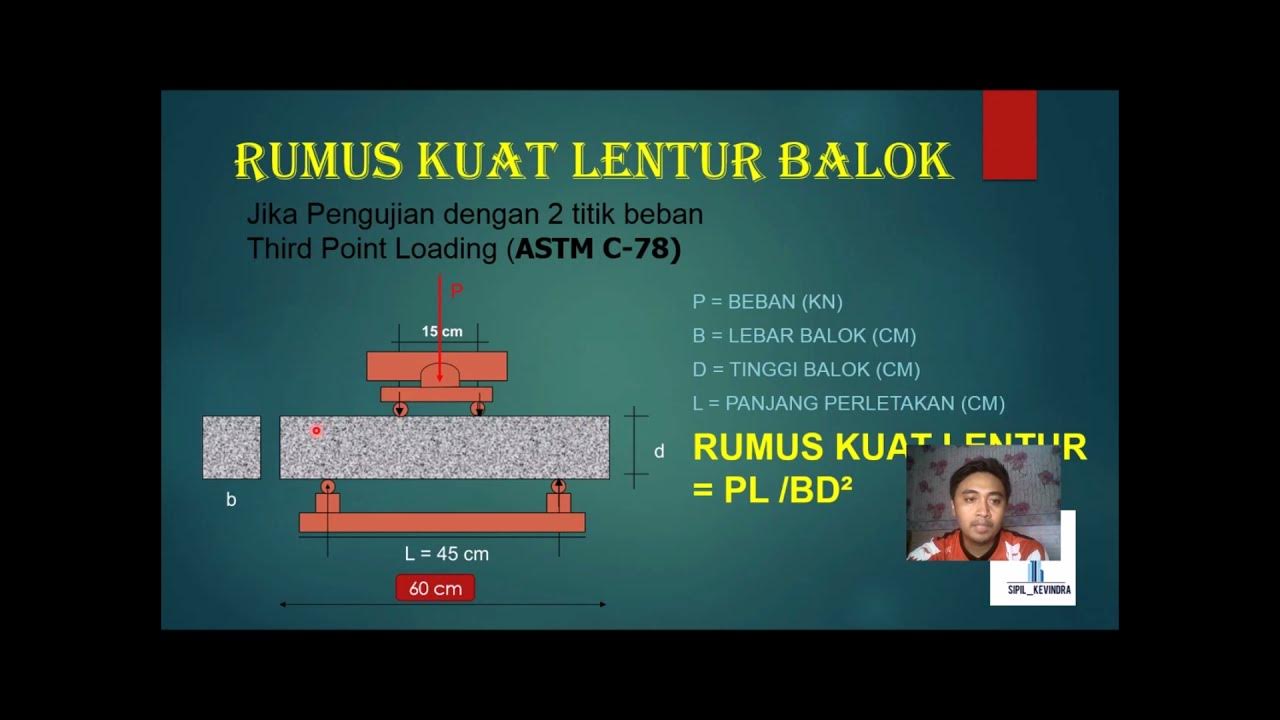Example-Timber Design-Flexural Member
Summary
TLDRThis video tutorial walks through the design of a flexural timber member, specifically an interior capper species beam. The script outlines the process of determining the permissible bending stress parallel to grain and calculating the maximum bending moment. Key concepts include modifying factors based on the beam's condition, load duration, and geometry. The permissible bending stress is calculated using a grade stress of 17.3 N/mm², and after applying modification factors, the maximum bending moment is determined to be 4.68 kNm. The video provides a step-by-step guide to timber design according to Malaysian standards.
Takeaways
- 😀 The example focuses on designing flexural members in timber and steel.
- 😀 The main question is to determine the permissible bending stress parallel to grain and the maximum bending moment for a main beam.
- 😀 The beam is interior with a smooth surface, and the nominal size is 50mm x 200mm.
- 😀 The timber species is capper, with a standard grade and moisture content of 19%.
- 😀 The duration of loading is long-term, and there is no load sharing.
- 😀 The first step involves determining the geometrical properties of the cross-section of the beam.
- 😀 Modification factors for grade stresses are applied to obtain the permissible bending stress, including factors for load duration, form, and depth.
- 😀 The modification factors (k1 to k6) are applied based on Malaysian standards, with k1 for load duration being 1.0.
- 😀 The permissible bending stress parallel to grain is found by multiplying the grade stress (17.3 N/mm²) by all the modification factors.
- 😀 The maximum bending moment for the beam is calculated to be 4.68 kNm.
- 😀 The process concludes with the determination of the permissible bending stress and maximum bending moment for the main beam.
Q & A
What is the first step in designing flexural members for timber beams?
-The first step is to determine the geometrical properties of the cross-section, such as breadth and depth, and apply modification factors as specified in the relevant standards.
What factors must be considered to obtain the permissible bending stress for a timber beam?
-There are six modification factors that need to be considered: K1 for duration of loading, K2, K3, and K4 for other conditions, K5 for the form of the section, and K6 for the depth factor.
What is the modification factor K1 for a long-term loading condition?
-For a long-term loading condition, the modification factor K1 is 1.0.
What is the value of the modification factor K5 for a rectangular section?
-The modification factor K5 is 1 for a rectangular section, as K5 only has specified values for solid circular and square sections.
How is the permissible bending stress determined for a timber beam?
-The permissible bending stress is determined by multiplying the grade stress by all the relevant modification factors.
What is the permissible bending stress for capper species with standard grade and 19% moisture content?
-The permissible bending stress for capper species with standard grade and less than 19% moisture content is 17.3 Newton per millimeter square.
How is the magnitude of maximum bending moment calculated for a timber beam?
-The magnitude of the maximum bending moment is calculated using the formula: Maximum Moment = Applied Bending Stress × Section Modulus.
What is the magnitude of the maximum bending moment for the main beam in the example?
-The magnitude of the maximum bending moment for the main beam in the example is 4.68 kilonewton meters.
What is the moisture content condition assumed for the timber beam in this example?
-The moisture content assumed for the timber beam in this example is 19%, which means the section is considered dry.
How do modification factors K2, K3, and K4 affect the bending stress calculation?
-In this case, modification factors K2, K3, and K4 are not given any specific values, so they are all assumed to be 1.
Outlines

此内容仅限付费用户访问。 请升级后访问。
立即升级Mindmap

此内容仅限付费用户访问。 请升级后访问。
立即升级Keywords

此内容仅限付费用户访问。 请升级后访问。
立即升级Highlights

此内容仅限付费用户访问。 请升级后访问。
立即升级Transcripts

此内容仅限付费用户访问。 请升级后访问。
立即升级浏览更多相关视频

Struktur Kayu Vid06 Perencanaan Batang Tarik Part3

PENGUJIAN TES KUAT LENTUR BETON

Pola Kegagalan Balok Lentur: Lateral Torsional Buckling, Tekuk Lokal, Plastik Sempurna Struktur Baja

Example Timber Design Compression Member by dRBI

Desain Balok Beton Bertulang Tulangan Tunggal | Penampang Persegi | Konsep dan Prosedur Desain

Contoh Perhitungan Analisa Balok Anak dgn Plastik Sempurna (Leleh Umum) | Struktur Baja | Lightboard
5.0 / 5 (0 votes)
